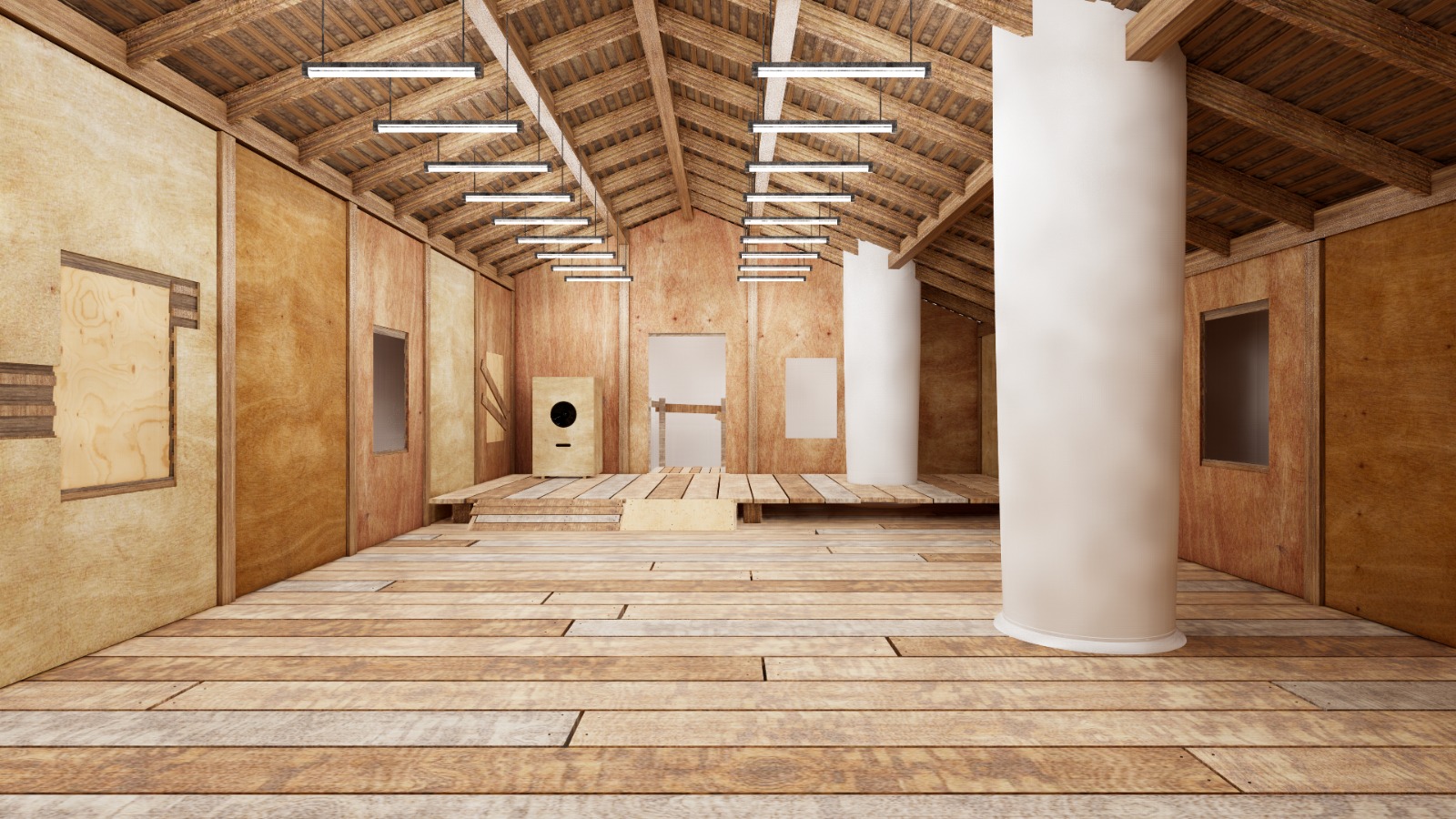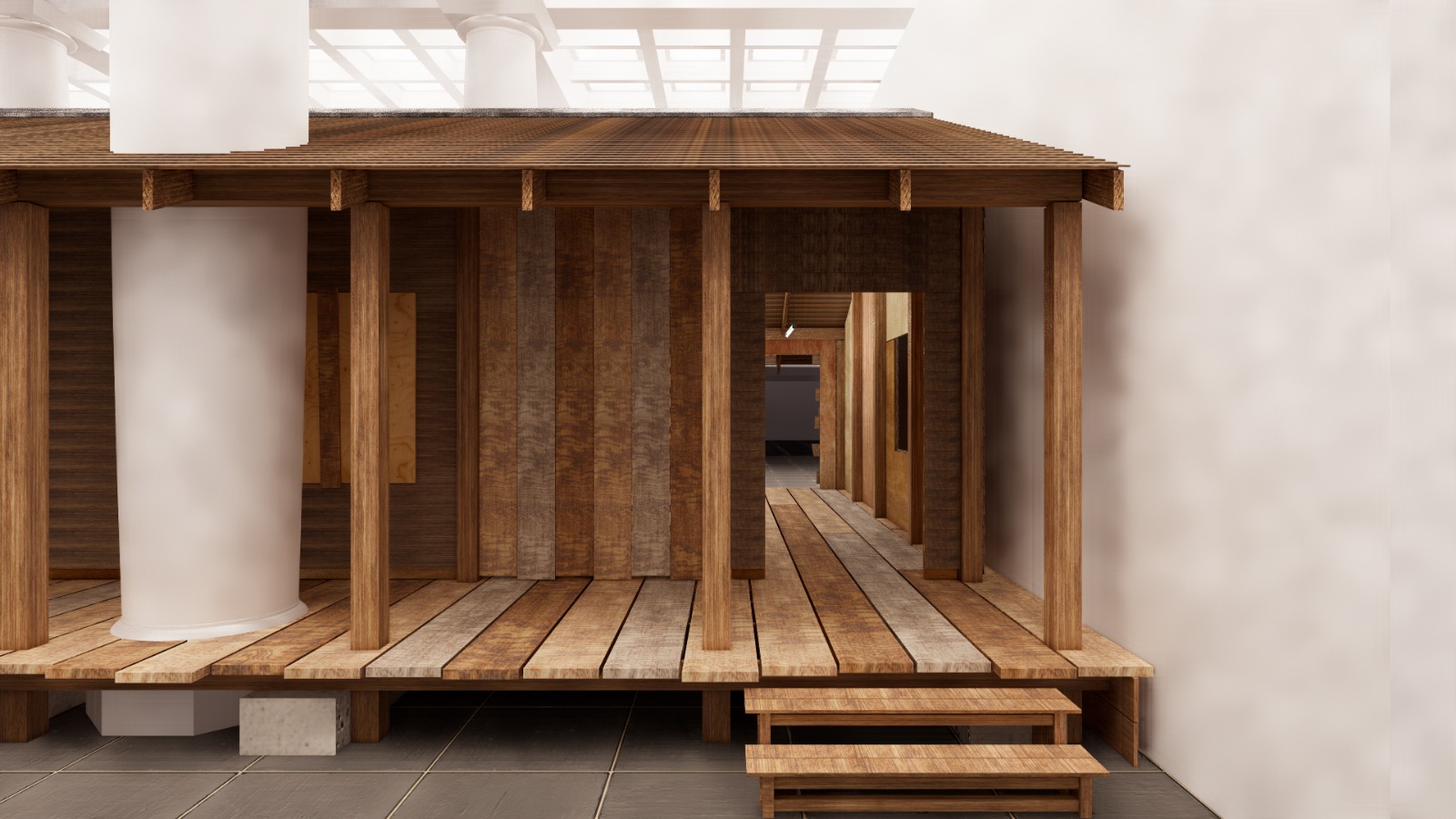Though, here at i-D, we’ve typically discussed Virgil Abloh in relation to his fashion work – particularly his prolific output at both Off-White and Louis Vuitton – the remit of his creative genius was so much broader. Informed by his architectural training, his approach to creating was boundless in its applicability, making itself felt in disciplines as varied as music, graphic design, industrial design and fine art. More often than not, his work blurred their boundaries and upended the hierarchies that separate them with rare irreverence.
Given the size and genre-defying nature of his oeuvre, it can be challenging to compute just how significant Virgil’s impact on the contemporary cultural landscape was. Through a newly opened exhibition, however, it’s possible to get a sense of just how powerful the legacy he leaves behind is. The show in question is Virgil Abloh: “Figures of Speech”, which after touring from Chicago to Atlanta to Boston to Qatar is making its final stop at the Brooklyn Museum in New York. Conceived before Virgil’s passing – and created in collaboration with him – the exhibition surveys two decades of his course-shifting work – from his collaborations with figures like Rem Koolhaas and Kanye West, to the work he produced at the helm of one of Europe’s proudest luxury houses.
While much of the work in the show will be familiar to those that have visited its previous runs, for the New York iteration of the exhibition – curated by Antwaun Sargent – there’s a significant addition: the “social sculpture”, a full-scale house developed in collaboration with his London-based design studio, ALASKA ALASKA. “It’s one of the things that’s radically different about this iteration of the show, and it was in fact Virgil’s last architectural project,” explains Antwaun. Created as a forum for knowledge exchange, it will see “collaborators from across his career come together and share ideas with the next generation,” he continues. “In effect, it will serve as a design lab, a schoolhouse, and a place for collaborators like Benji B and Ian Isaiah to make art” before an open audience, all throughout the exhibition’s seven-month run.
To mark the exhibition’s opening, Antwaun talked us through his lasting memories of Virgil, the show’s ambitious scope, and how it carries forward the artist and designer’s infinite legacy.

Do you remember the first time that you encountered Virgil’s work? What was it about it that struck you?
I grew up in Chicago, too, so he’s long been a figure that I was aware of. There are two moments that have been defining, though — one was RSVP Gallery, a store in Chicago that he and his friends founded. I remember being in that space as a teenager so clearly; there was nowhere else like it. It gave me a real sense of him as a world-maker — someone who made spaces for folks who didn’t have them. And then in 2015, Yoko Ono had a show at MoMA, and did this performance piece at 4am where Virgil DJ’d. I have this image burned into my mind of all of these kids literally jumping up and down on MoMA’s furniture going crazy. I’ve been working in contemporary art since I was 21, and I’ve never seen anything like that in a museum — especially at a place like MoMA. It really made me pay closer attention to what he was doing.
What sort of conversations did you have with Virgil while discussing this iteration of the exhibition? And did the scope change at all following his passing?
No, nothing changed. Virgil, Mahfuz [Sultan] and I had worked on this show for two and a half years, so we had a pretty good idea of what it was going to be. Of course, doing a show with a living artist versus one who’s no longer with us is a very different concept, and we wanted to honour that. But our mission was ultimately to carry his vision through. In developing the exhibition, though, we talked about everything. He was famous for his WhatsApp groups, and I was in about 15 of them! I just recall him being really engaged, and really on. And he was always prodding, asking ‘What do you think of this? What can we do?’ But that’s not to say he was asking for permission — he was trying to push the limits of what was considered possible; he was saying that we should just do it. That was the ethos that defined him as an artist and a creator. And you see that in the layout of the exhibition — I don’t know how many museums, or how many artists even, would put their work on tables for the public to come and engage with up close.

A key focus of the exhibition is Virgil’s collaborative legacy. What do you think made him such a prolific collaborator?
One thing was this concept of ‘tourist versus purist’. Through his collaborations — whether with Nike or IKEA, Louis Vuitton or Evian — I think he was trying to reach both. He was really thinking about hierarchies in design and how he could break them down, and used collaboration as a tool to do that. He deeply believed in a world that was designed for more people than it is right now, and that was one of the tools he used in his attempt to design that world.
Are there any collaborations in the show that you think particularly exemplify his approach to working?
Yes, it’s actually one of the works that are new to the exhibition — something that Virgil was still working on when he sadly passed away. It’s a collaboration that he did with Braun on a speaker system. He was thinking about Braun as part of the canon of European design, while also thinking about Houston slab culture and American hip-hop-influenced design aesthetics. He then made this 45-minute mixtape, the basis of which was jazz, and invited a group of Houston-based artists to expand on that. It was essentially a layering of collaborations, through design, music and the collision of Afro-American and European aesthetic traditions.

How do you think his fashion work, in particular, exemplified that approach? How have you explored the interrelations between his work in fashion and the other disciplines he worked in?
One of the key things is there was no distinction between his work in fashion, art, music, design, architecture… That was really important to factor in here. From one table to the next, you might see fashion, sketches, a video or music project, or a design project. There’s no hierarchy. He moved through the world so fluidly
The title of Louis Vuitton’s most recent menswear show was ‘Infinity’, a testament to the endless legacy that Virgil leaves behind. How would you say that this exhibition speaks to that idea?
Well, even now, with him no longer being with us, his ideas continue to inspire so many people. And not just friends of his — like Tyler, The Creator or Drake, who just dedicated his recent album to him — but everyday folks. In a lot of ways, he was a point of introduction to the ideas he discussed. He really made it clear how he had forged his path, enabling others to forge theirs, too. He gave people the keys to their own creation, and when groups of people have not been in certain spaces, they often need someone to give them permission to access them — to say that their ideas are valid. He often spoke about the metaphor of the Trojan horse, and how he saw himself that way. He recognised that by virtue of being in certain spaces, it would then allow a lot of other people to be part of them, too. That’s what I would say is the crux of Virgil’s infinite legacy.


Virgil Abloh: “Figures of Speech” is at The Brooklyn Museum until 29 January 2023. Follow i-D on Instagram and TikTok for more exhibition coverage.

